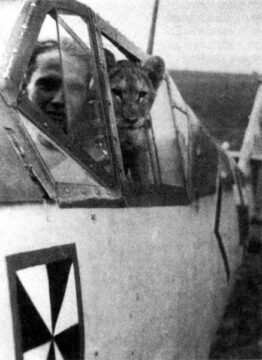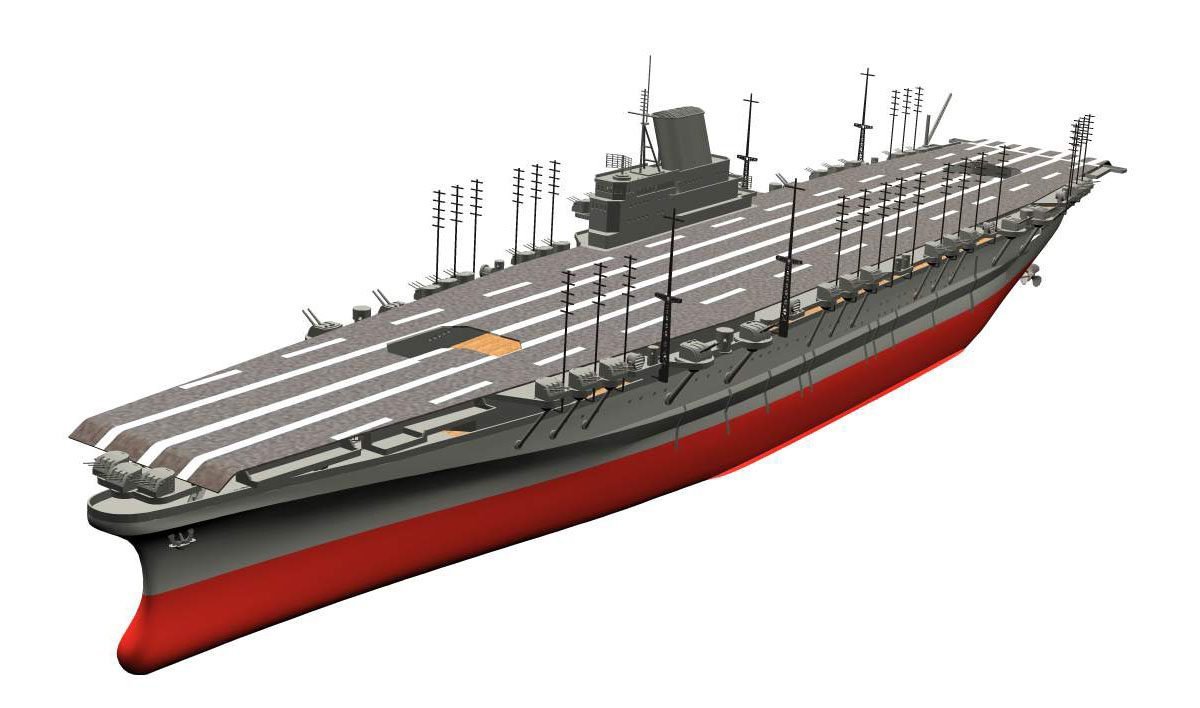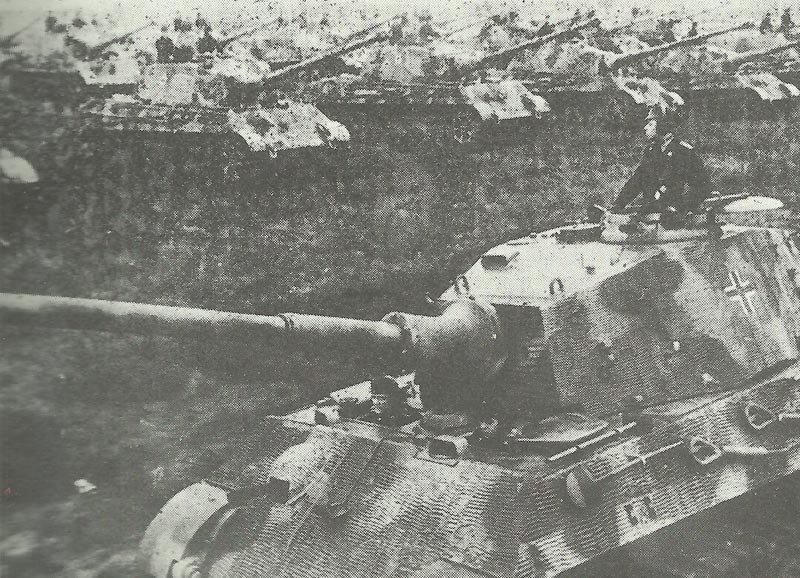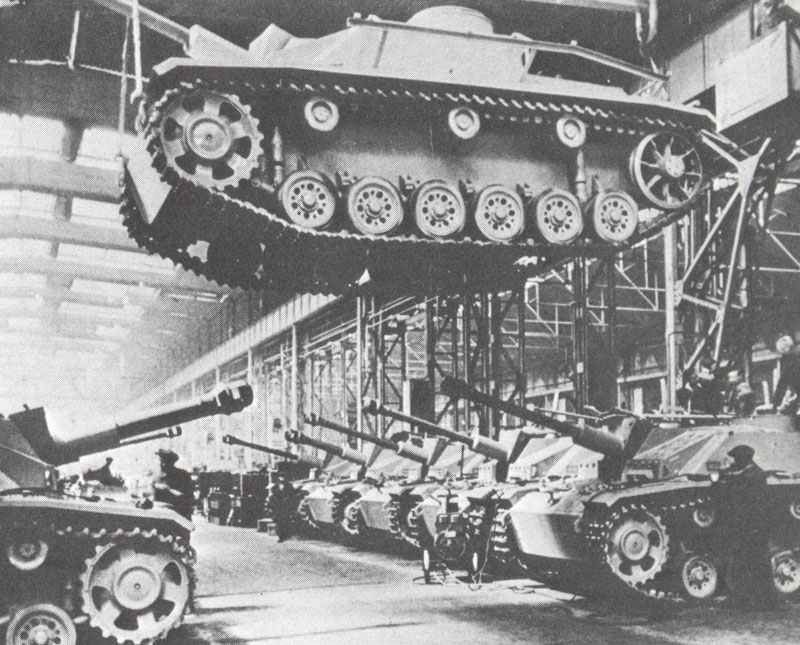Messerschmitt Bf 109 (or Me 109) – most-built German single-seat fighter plane of WW2.
History, development, service, specifications, pictures and 3D model.
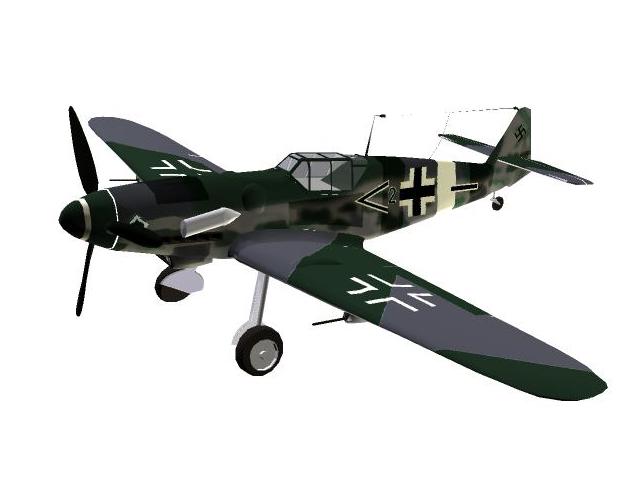
Me 109
Table of Contents
Messerschmitt Bf 109
Bf 109 B,C,D,E,F,G,H and K-Series, S-99 and 199, Ha-1109-1112
Type: Single-seat fighter plane (many, fighter-bombers).
The Messerschmitt Bf 109 is often referred to as the Me 109, but at the time of its design the later Messerschmitt-AG was still the Bayerische Flugzeugwerke, which is why Bf 109 is technically correct.
The Messerschmitt Bf 109 was a German World War II fighter aircraft that was, along with the Focke-Wulf Fw 190, the backbone of the Luftwaffe’s fighter force. The Bf 109 first saw operational service in 1937 during the Spanish Civil War and was still in service at the dawn of the jet age at the end of World War II in 1945.
Overview
Engine: The Bf 109 was powered by a liquid-cooled, inverted-V12 aero engine (mainly the Daimler-Benz DB 601 series), which gave it excellent performance for its time.
Armament: The Bf 109’s armament typically consisted of two 7.92mm machine guns above the engine and one 20mm cannon firing through the propeller hub.
Variants: The aircraft was produced in several variants, with the Bf 109E (Emil) being the most common during the early part of the war, and the Bf 109F (Friedrich), Bf 109G (Gustav), and Bf 109K (Kurfürst) being introduced later.
Service: The Bf 109 served in all theaters of World War II and was flown by the air forces of Germany, Italy, Spain, Finland, and several other countries.
Aces: Many of the world’s top fighter aces flew the Bf 109, including the highest-scoring ace of all time, Erich Hartmann, who claimed 352 aerial victories.
Despite its constrained design and limited development potential, the Bf 109 remained a competitive fighter aircraft throughout the war, and its design became the foundation for other fighters like the Focke-Wulf Fw 190 and the Heinkel He 100.
Development Messerschmitt Bf 109
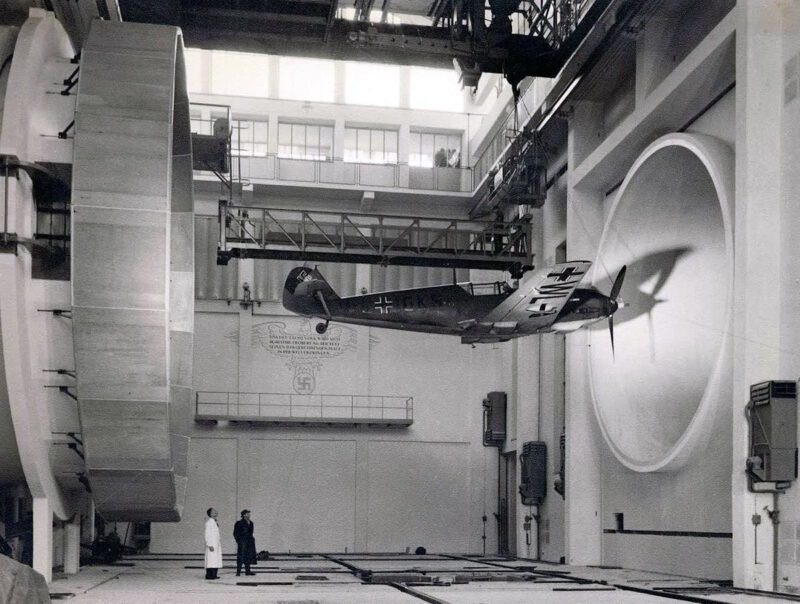
For 25 years, the Bf 109 was in production somewhere in the world. It was used by the German Air Force for eight years, while its production accounted for nearly two-thirds of total German production of single-seat fighters from 1936 to 1945. Exported or licensed models equipped the air forces of nearly a dozen other nations. The total number of all examples built was well over 33,000.
The Bf 109 was designed by Bayerische Flugzeugwerke AG (in short ‘Bf’) in 1933 around the most powerful German aircraft engine of the time, the 610-horsepower Junkers Jumo 210A. The origin of the Bf 109 lay in the excellent, advanced Bf 108 Taifun liaison aircraft. Nevertheless, Ernst Udet believed that this aircraft ‘will never make it to a fighter’.
The first prototype Bf 109 V1 (D-IABI) had its maiden flight in early September 1935, using a 695-hp Rolls-Royce Kestrel V engine. In comparative flights against the Ar 80 V1, Fw 159 V1 and He 112 V1 at Travemünde, the Bf 109V1 proved convincing, despite some minor problems, to the surprise of the experts. Originally, the Reich Aviation Ministry had assumed that the Bayerische Flugzeugwerke did not have sufficient experience to build high-speed aircraft.
So the company received an order for ten prototypes, with Heinkel also receiving an order for 10 aircraft for its He 112.
It was not until November 1935, during further flight tests at Travemünde, that the Bf 109 was determined to be the final winner of the tender on the basis of superior flight performance, lower production costs and a spectacular presentation by Dr Ing Hermann Wurster.
The Bf 109V2 was subsequently powered by a Jumo 210A and flew for the first time in January 1936, followed by the intended prototype for the first production models, the V3.
The first operational fighter versions were the Bf 109B-1 and B-2, based on the V4 and V7 prototypes. These were armed with two 7.92-mm MG17 machine guns above the engine and a third MG 17 which fired through the propeller hub.
Deliveries of the B-1 with the 680-hp Jumo 210Da began in April 1937 to the JG 132 fighter Geschwader (wing), which reinforced the Luftwaffe’s Condor Legion for use in the Spanish Civil War.

On November 11, 1937, the Bf 109 V13 (D-IPKY), powered by a specially supercharged DB 601 engine, marked an absolute world speed record of 379.38 mph (610.55 km/hr).
Despite its successful combat debut in Spain, the Bf 109B’s armament still left room for improvement. With the Bf 109C-1, the armament was increased to four MG 17s, with two mounted above the engine and two in the wings. With the C-3, there were even five MG 17s, with the last one again firing through the propeller hub. The C versions of the Messerschmitt Bf 109, with a 700-hp Jumo 210Ga engine, also reinforced the previous B models in Spain in 1938.
During these years, Arado, Erla, Fiesler, Focke-Wulf and WNF factories also began production of the Bf 109 and BFW (Bayerische Flugzeugwerke AG) changed its name to Messerschmitt AG (in short ‘Me’).
The installation of the 986 hp DB600Aa engine led to the Bf 109D series, which had better performance. Small series of the Messerschmitt Bf 109D were also exported to Hungary and Switzerland.
At the outbreak of World War II, the Luftwaffe had a strength of 1,056 Bf 109s, many of which were still Bf 109Ds, but this series was already being replaced in increasing numbers by the Bf 109E. This first appeared with the prototype V14 in mid-1938, and the first E-1s were built both as fighters armed with four 7.92-mm MG 17s and as fighter-bombers with an additional 250-kg or four 50-kg bombs. Later E models received a 20-mm MG-FF cannon in place of the machine guns in the wings.
Against any fighter defenses over Poland, France, Belgium, Holland and southern England – with the sole exception of the outnumbered Supermarine Spitfire Mk I – 2 in the Battle of Britain – the Emil, as the Bf 109 E was called, proved superior in performance and maneuverability. Only its range was to be criticized.
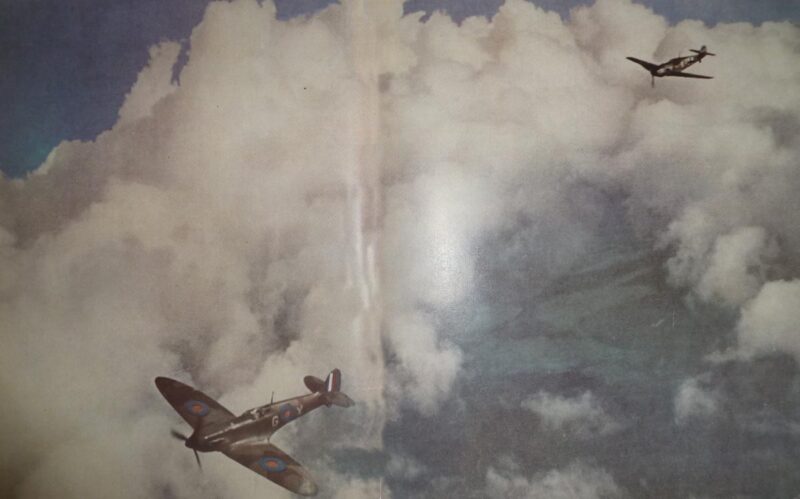
Its advantages were small size, fast and cheap production, high acceleration, great climbing ability, dive capability, and good maneuverability. Most of the Bf 109E was also equipped with two or three 20-mm guns, whose range and firepower were greater than that of a battery of eight rifle-caliber machine guns on British fighters.
Disadvantages included the narrow landing gear, some unsteadiness during takeoff and landing, extremely poor lateral control at high speeds, and the fact that the slats could open in tightly flown turns. While this prevented stalling, it tore in the ailerons and threw the airplane off course to a target in aerial combat.
Production developed to such an extent that Germany could afford to export substantial numbers of the Bf 109E-3s that appeared in late 1939 to Bulgaria, Hungary, Japan and Romania, Slovakia, Switzerland, the Soviet Union and Yugoslavia. In addition, a small production run was also built at Dornier’s Altenrhein factory in Switzerland for the Swiss Air Force. The Bf 109E-3 was also the main German fighter during the Battle of Britain.
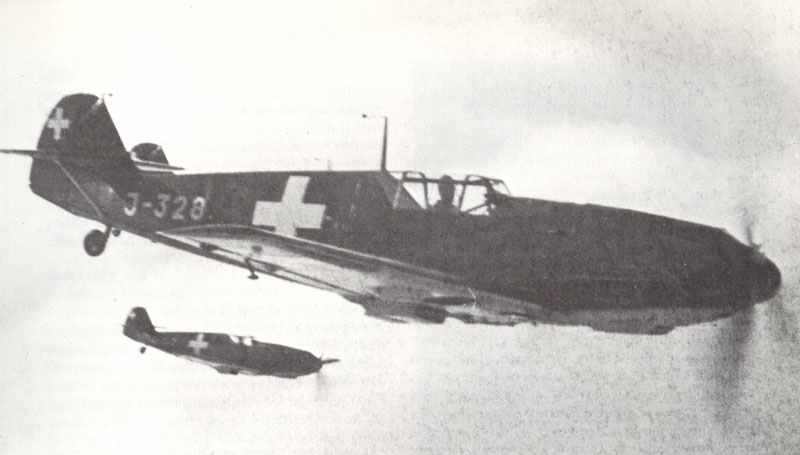
In July 1940, Gerhard-Fieseler-Werke began converting 10 Bf 109E-1’s into Bf 109T‘s (‘T’ for ‘Träger’ = carrier) with enlarged wingspans. These were to become the developmental aircraft for the Bf 109T-1, which were intended for use by the Graf Zeppelin aircraft carrier currently under construction. After the aircraft carrier program was suspended, the 60 T-1s ordered were completed as land-based T-2s.
Various other E models up to the E-9 were built as fighters or reconnaissance aircraft and had different variations in engine and equipment.
In early 1941, the Emil also made its first appearance over the Mediterranean area and production of tropical versions began, which were used by JG 27 in North Africa.

In the meantime, Messerschmitt had developed the version that many pilots considered the best Messerschmitt fighter: the Bf 109F. Powered by a 1,200-hp DB601N or 1,350-hp DB601E engine, the Bf 109F represented a significant advance over previous series in terms of both performance and airframe cleanliness.
The Bf 109F finally gave the German Luftwaffe a fighter that could outmaneuver the British Spitfire Mk V, and the entire fuselage was more aerodynamically optimal, culminating in a rounded rudder, free tail plane and retractable tail wheel. The wings of slightly increased span were rounded at the tips and performance at all altitudes was better than earlier models.
The production series ran from the F-1 to F-6 with various subtypes. Several F-series aircraft were used as test aircraft, including BMW 801 (radial) and Jumo 213 engines, a V-tail, rocket weapons, and nose landing gear.
One prototype that never flew but is of interest was the 1943 Bf 109Z, in which two Bf 109Fs were ‘mated’ by joining them with a new common wing center section and horizontal stabilizer. A single pilot was to control the twin aircraft from a cockpit in the front of the fuselage.

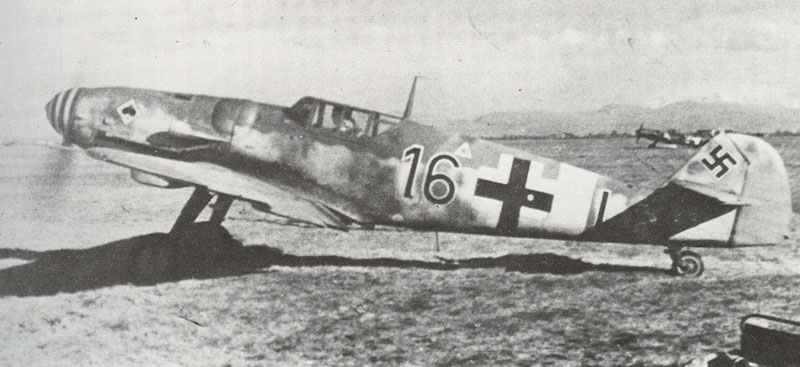
During 1942, the Bf 109F was replaced in production and in front-line units by the numerically most powerful variant, the Bf 109G. Heavier and less maneuverable than the Bf 109F, with a DB605 engine and additional equipment, the Gustav was less successful individually.
Nevertheless, they were widely used over Europe, North Africa, the Mediterranean area, and on the Eastern Front. Production also showed no decline; in fact, it rose sharply.
From the 2,628 Bf 109s taken over by the German Luftwaffe in 1941, the number rose only slightly to 2,664 in 1942, but by 1943, 6,379 Bf 109Gs had been delivered, and by 1944, as many as 13,942 Messerschmitt fighter single-seaters had been delivered. And this was despite the increasingly dispersed production centers to reduce the impact of Allied bombing. To these figures must be added the aircraft produced under license in Hungary and Romania in 1943-1944.
Overall, more than 70 percent of all Messerschmitt fighter single-seaters in the German Air Force were of the G model, which included numerous variants from the G-1 to G-16, with numerous other subtypes. There were models for interceptors, fighter-bombers, and reconnaissance aircraft.
The G-6, for example, was also equipped with a radar unit and was widely used as a night fighter for ‘Wilde Sau’ missions from 1943.
The Bf 109G-14 was a heavily armed ground attack aircraft, which only entered production shortly before the German surrender and saw no further combat service.
Recipients of export models of the Bf 109G were Bulgaria, Finland, Hungary, Romania, Slovakia, Spain and Switzerland. In Spain and Czechoslovakia, licensed production of various G models continued after the end of the war.

The last wartime models to be used operationally by the fighter squadrons were the Bf 109H and Bf 109K. Only a few of the H-0 and H-1, envisioned with extended wingspans, were actually built, as the development priority for a high-altitude fighter was subsequently shifted to the Focke-Wulf Ta 152.
Some Bf 109K models, which were basically refined and optimized versions of the Gustav with wooden tail plane and the clear-view ‘Galland canopy’ of the late G-series, entered service from October 1944, but did not see many combat missions, mainly due to fuel shortages.
The prototype Bf 109L with a Jumo 213E engine did not lead anymore to a production series.
Since the production lines of the Czech Avia factory were undestroyed after the end of the war, the Messerschmitt Bf 109 continued to be built there as the S-99. After DB605 engines were no longer available, the slower running Jumo was used and the aircraft was designated the S-199. This model was much weaker in performance than the original German models and was referred to by pilots as ‘Mezek’ – for ‘mule’. Israel nevertheless bought some aircraft in 1949 and used them against the Arabs.
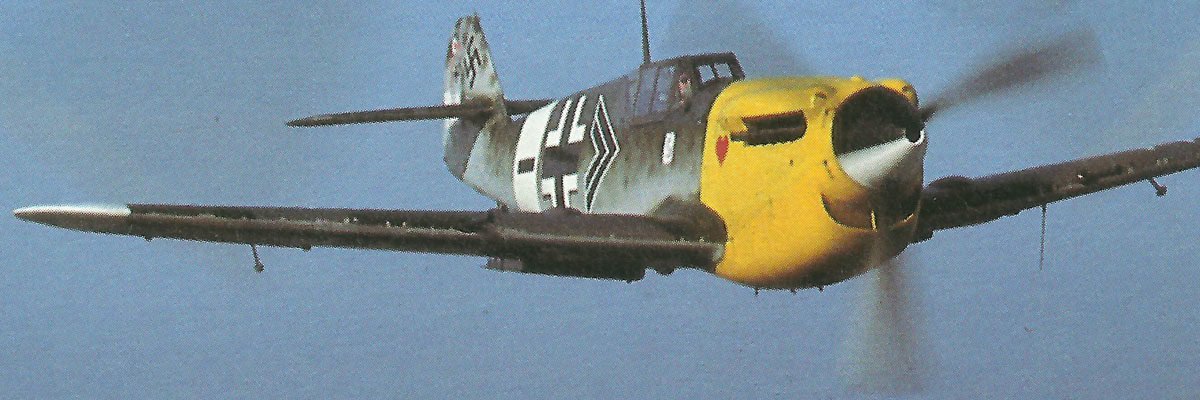
In Spain, licensed production of the Bf 109 began at Hispano Aviacin in March 1945. In 1953, the engine was also replaced here when the Merlin was used and the aircraft was designated the Hispano HA-1109-M1L Buchon (Dove). Again, there were still several variants and ongoing model designations, including fighter-bombers and also two-seat training aircraft.
It wasn’t until 1956 that the last aircraft was completed in Seville – an HA-112 – bringing production of arguably the most important fighter in military history to an end after 21 years. During this time, probably more than 35,000 examples were built worldwide.
Users: Bulgaria, Croatia, Finland, Germany (Luftwaffe), Hungary, Italy, Japan, Yugoslavia, Romania, Slovakia, Slovak, Russia (1940), Spain, Switzerland (post-war: Czechoslovakia, Israel).

Animated 3D model Me 109 G with additional guns under wings
Messerschmitt Bf 109 K
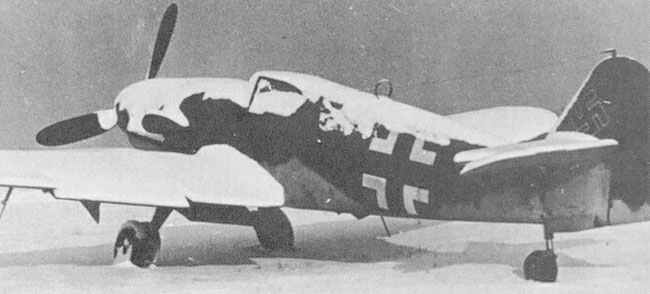
The first model of the Bf 109K was built in the winter of 1943 at the WNF factory in Wiener-Neustadt, Austria. In addition to the more powerful engine, the Bf 109K was notable for its use of wooden components. Other differences included improved wheel fairings and a retractable tail wheel.
The new version had been further developed directly from the Gustav. The pre-production Bf 109K-0 aircraft even had only modified airframes from the original G-series.
The K-2 and the pressurized-cabin-equipped K-4 were powered by a 2,000-hp DB605 ASM/DCM engine boosted by MW-50 injectors and armed with a 30-mm MK103 or M108 and two 15-mm MG151 heavy machine guns.
By order of March 2, 1944, from the Reich Air Ministry, it was determined that only the K-4 would go into mass production. The K-1 and K-3 with different armament and engine configurations were cancelled for lack of capacity for construction.
The Bf 109K-4 was powered by a DB605D engine. By using a variable pitch propeller with an electromechanical control system that adjusted for boost pressure and speed, and an enlarged radiator, Messerschmitt hoped to increase speed by an additional 12 1/2 mph (20 km/hr).
Armament consisted of two MG131s in the fuselage and an MK108 cannon that fired through the propeller hub.
The first production aircraft was delivered to III/JG 27 at the end of October 1944, followed by IV. Group of the same Geschwader, as well as III./JG 4 and III./JG 77.
By mid-1944, the Bf 109K-6 was available with modified armament. This consisted of two MG 131s above the engine, one MK 108 gun through the propeller hub and two more MK 108s in the wings.
A model of this ‘Sturmjäger’ (assault fighter) was tested at Regensburg in early December 1944. Although according to a performance calculation of December 11, 1944, with the DB605-ASCM/DCM engine the top speed was 378 mph (608 km/hr) at sea level and increased to 452 mph (728 km/hr) at 26,240 ft (8,000 meters), the model was never built in larger numbers.
Nevertheless, small numbers of K-8 reconnaissance versions, which had an MK103 instead of the MK108 gun, the K-10 and K-12, and the K-14 high-altitude fighter with a DB605L engine still appeared in the last months of World War II.
Of the K-15, with a top speed of 450 mph (725 km/hr), only two aircraft saw combat service until the end of the war. One of them was given to fighter ‘Ace’ Major Wilhelm Batz at Gruppenstab (group staff), II./JG 52, in April 1945.
Specifications Messerschmitt Bf 109 K-4
Specifications:
Me 109 K-4 | Specification |
|---|---|
Type | last Messerschmitt series of the single-seat fighter |
Power plant | 1 x 2.000 hp DB 605ASCM |
Accommodation | 1 |
Wing span | 32 6.7 ft (9.924 m ) |
Length overall | 29 0.3 ft (8.848 m) |
Height overall | 10 6.0 ft (3.20 m) |
Wing area | 174.38 sq ft (16.20 m²) |
Weight empty | ? |
Weight loaded | 7,474 lb (3,390 kg) |
Max wing loading | 42.86 lb/sq ft (209.26 kg/m²) |
Max power loading | 3.68 lb/hp (1.67 kg/hp) |
Max level speed | 452 mph at 19,685 ft (728 km/hr at 6,000 m) |
Cruising speed | ? |
Time to height | 16,405 ft (12,500 m) in approx. 3.0 min |
Service ceiling | 41,010 ft (12,500 m) |
Range | 357 miles (575 km) |
Armament:
Me 109 K-4 | Specification |
|---|---|
through propeller hub | 30mm MK 108 (650 rpm, velocity 1,705 ft.sec) or 30mm MK 103 (420 rpm, velocity 2,820 ft.sec) |
above engine | 2 x 13mm MG 151 (700 rpm, velocity 3,131 ft.sec) |
Service statistics:
Me 109 | figures |
|---|---|
Production start (Me 109K) | October 1944 |
Final delivery | May 1945 |
Price per unit | RM 100,000 = $ c.45,000 = £ c.11,250 |
Total production figure (all) | 35,000+ (c.30,480 during WW2) |
Accepted by Luftwaffe 1/39-12/44 | 29,350 |
Production 1939 | 449 |
Production 1940 | 1,693 |
Production 1941 | 2,764 |
Production 1942 | 2,665 |
Production 1943 | 6,154 |
Production 1944 | 13,786 |
Production 1945 | 2,969 |
Me109's in First Line Units 1.9.39 | 1,085 |
Me109's in First Line Units 20.9.42 | 1,074 |
Me109's in First Line Units 31.12.42 | 700 (incl. 610 Me109 G) |
Me109's in First Line Units 10.1.45 | 1,305 |
References and literature
Operation Barbarossa: the Complete Organisational and Statistical Analysis, and Military Simulation, Volume I – IIIB (Nigel Askey)
The Encyclopedia of Weapons of World War II (Chris Bishop)
Combat Aircraft of World War II (Bill Gunston)
Technik und Einsatz der Kampfflugzeuge vom 1. Weltkrieg bis heute (Ian Parsons)
Das große Buch der Luftkämpfe (Ian Parsons)
Luftkrieg (Piekalkiewicz)
Flugzeuge des 2. Weltkrieges (Andrew Kershaw)
German Aircraft of World War 2 in Colour (Kenneth Munson)
Warplanes of the Luftwaffe (David Donald)
The Luftwaffe Album, Bomber and Fighter Aircraft of the German Air Force 1933-1945 (Joachim Dressel, Manfred Griehl)
Luftwaffe Handbook (Dr Alfred Price)




